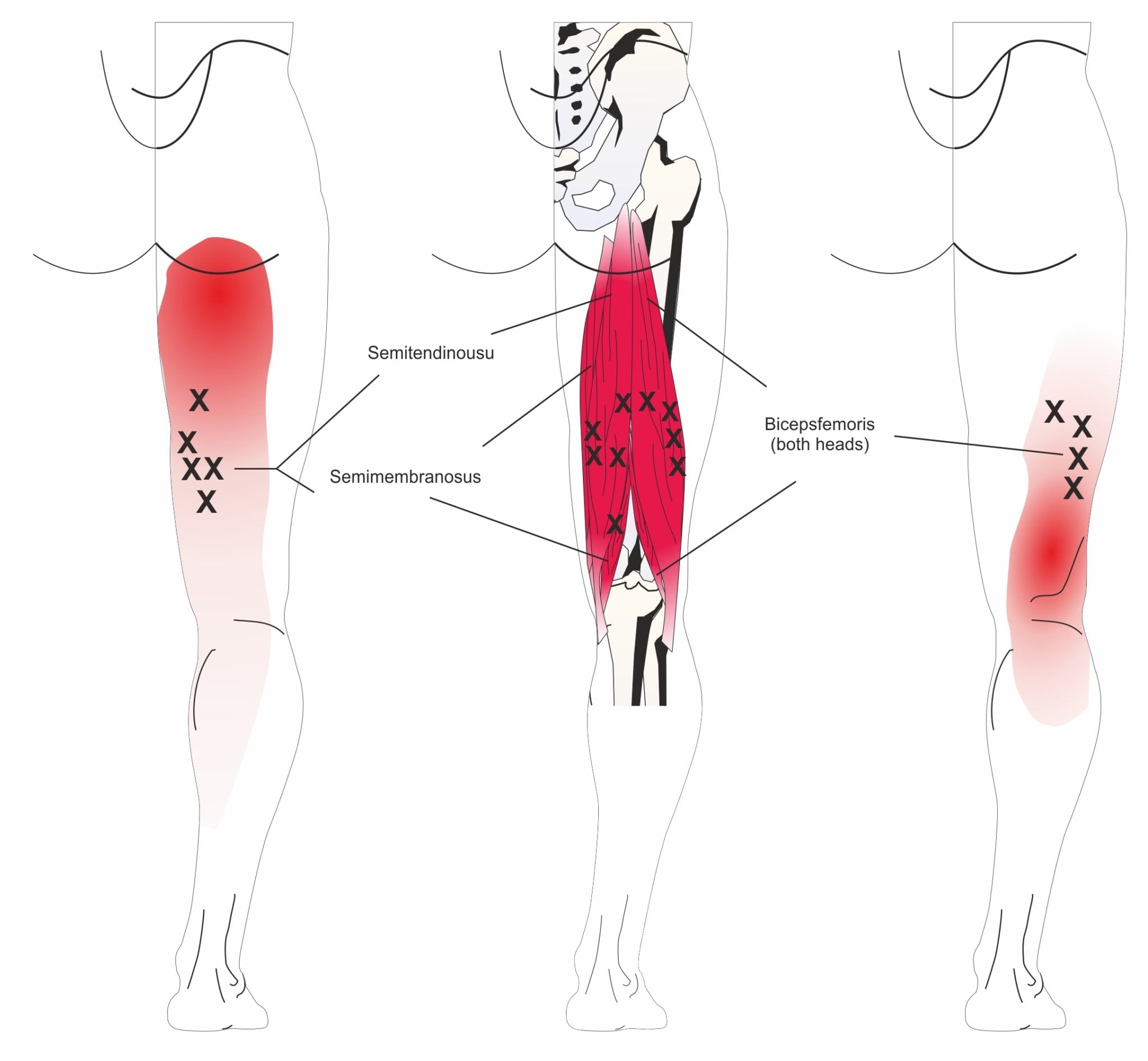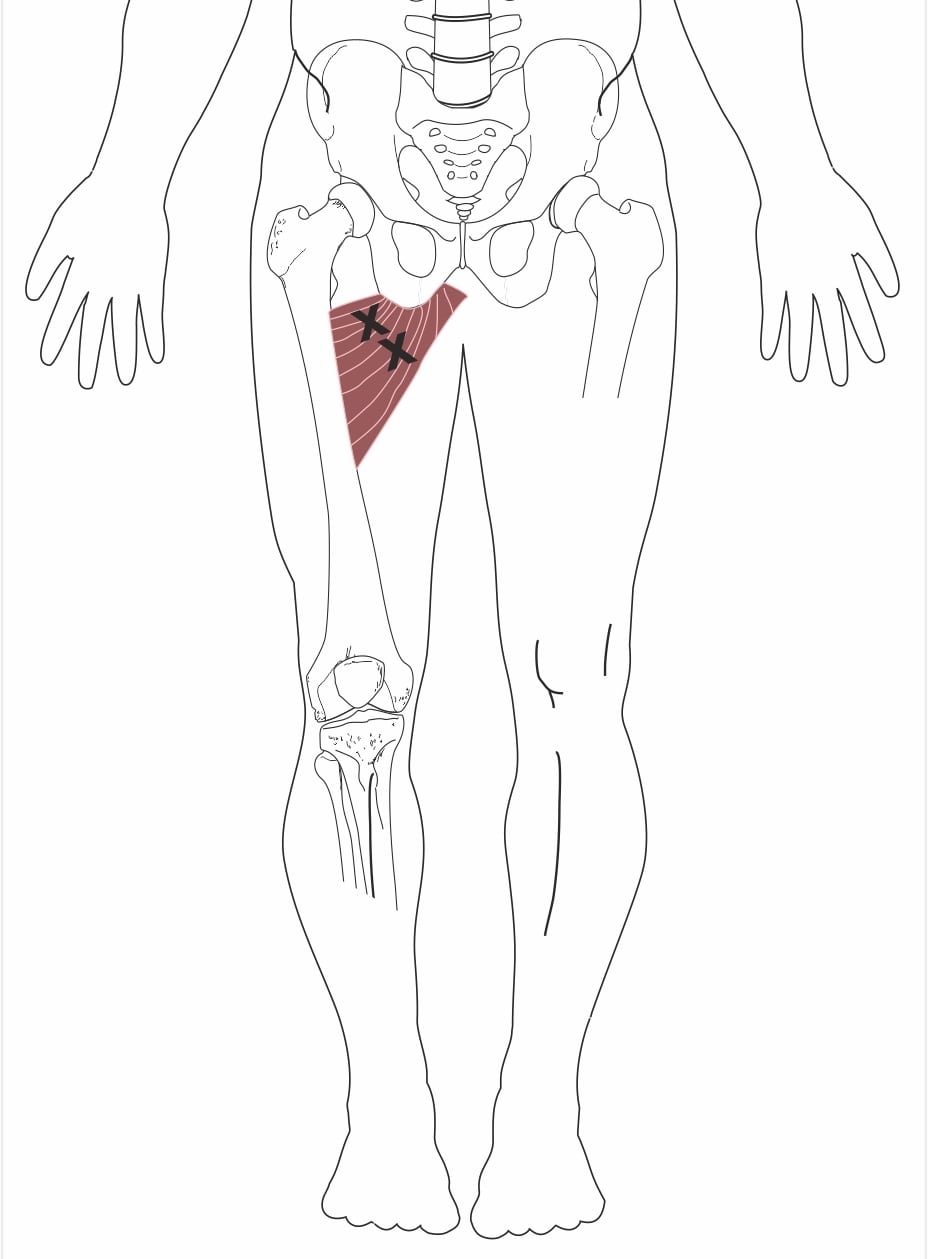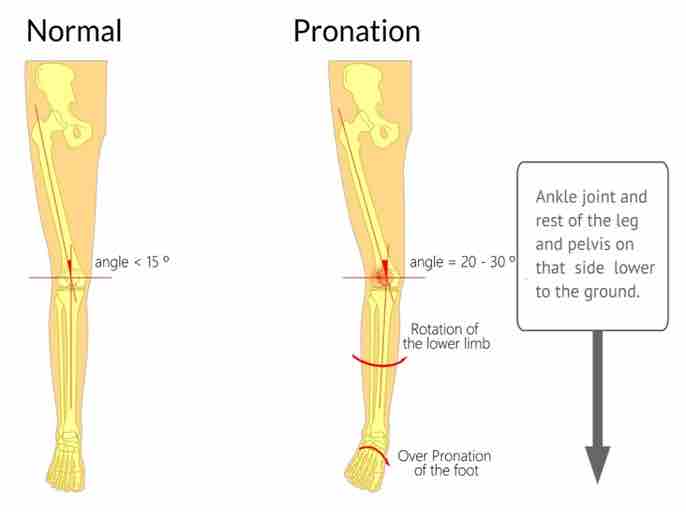Sports Injuries, Muscle & Other Soft Tissue Pain and Injuries
Contact one of our clinics to book an appointmentTreatment for Ligament Sprains
Most people have at one time or another twisted one of their ankles, this is called an “inversion strain” and is one of the most common types of ligament injury. A twisted ankle tends to damage the ligaments one the outside of the ankle (for example the anterior talo-fibular ligament, posterior talo-fibular ligament and the calcaneo-fibular ligament). This will cause localised pain and swelling that may last for several weeks or even months and may cause long term effects (especially if untreated). Every joint of the body has ligaments, other common ligament injury sites include the cruciate or collateral ligament from knock or twists to the knee, wrist ligament sprains from falls on the wrist, and neck ligament sprain (ligamentum nuchae) from whiplash.
At worst the violent pull on the ligaments from an ligament injury could cause a piece of bone to be pulled away (avulsion fracture) and even or a fracture to one of the bones. If this is suspected it is important to have the injury investigated, often with an x-ray or an MRI scan to determine whether or not a fracture has occurred. In many cases a fracture will not have occurred and people may think all they need to do is rest and wait for the ligaments to heal (which will typically take 6-12 weeks). However, they may fall into the trap of not receiving the best advice or treatment for what may be quite severe damage to their ligaments.
What many people don’t realise is that injuries such as inversion strains will often cause detrimental long term effects to muscle coordination, muscle and joint balance (proprioception) and ligament strength and joint stability. This can risk long term pain and further injuries to the whole limb, for example and twisted ankle can affect the way the person distributes force through then ankle when walking which may affect their knee, hip and even lower back later down the line, especially for people playing sports. It is therefore advisable to seek specialist physical therapy help in order manage, rehabilitate and prevent the detrimental long term effects from such injuries. There is much that can be done to ease the acute pain and swelling with electrotherapy (e.g. ultrasound), massage (effleurage) and taping, then during the middle stages of rehab special exercises can be taught to strengthen and re-coordinate lost muscle function. If scar tissue has started to form in a ligament modalities such as shock wave therapy can useful and dry needling (acupuncture) and prolotherapy (sugar injections) may help strengthened weakened ligaments (by promoting collagen formation within damage ligaments).
Treatment for Muscle Strains
Anyone who uses their muscles a lot, be that from sport, gardening or just the day to life toll of work and rushing around with the kids, will know what it like to over-do things occasionally. Most of the time minor muscle aches and strains will resolve themselves within a week or so but bad muscle pulls, spasms or tears can turn into chronic problems and may not fully heal properly. Chronic muscle injuries can be involve muscle knots (trigger points), portions of muscle with taut, shortened or fibrous tissue, myofascial adhesions and altered “muscle memory” nerve pathways that disturb the normal “resting tone” of our muscles and may alter posture, movement and muscle recruitment patterns.
At Spine Plus our therapists have an intuitive understanding of how complex our bodies are and the cascade of effects that can occur following soft tissue injuries. We pride ourselves on the expert multi-modality soft tissue release treatments we offer our patients, ranging from remedial massage (soft tissue release, sports massage, cross fibre massage, friction, lock and key), to trigger point dry needling (medical massage), “muscle energy technique”, “neuro-muscular technique”, “PNF stretching”, electrotherapy (ultrasound and shock wave therapy), to taping and referrals and advice for specialised regenerative injections (such as Platelet Rich Plasma, prolotherapy and stem cell injections).
Therapy For Hamstring Strain
The Hamstring is the name of the muscle group at the back of the thigh. The Hamstring muscles are heavily used during sporting activities such as running and during gym exercises such as (stiff leg) deadlifts. The hamstring is the site of common sports injuries ranging from relatively simple grade 1 damage involving a small portion of the fibres (less than 5%) requiring up to a few weeks to recover, to grade 2 (incomplete rupture) requiring 2 to 3 months recovery to grade 3 (complex rupture) which often require surgery. However hamstring strain can also be confused with sciatica from a low back injury as a trapped nerve in the lower back (sciatica) can often feel like a pulled hamstring. In this situation it is obviously important to be able to employ the correct diagnostic clinical tests (such as the “straight leg raise test +/- held lift) to distinguish between hamstring tension and neural tension.
No matter how severe or what your injury is, at Spine Plus we can help with all aspects from referral for diagnostic ultrasound or MRI scans, to therapy to assist healing of grade 1 – 2 muscle damage (massage, dry needling, electrotherapy and taping) to post operative treatment and exercise advice.

Trigger Point Pain Therapy
Most people know Trigger Points as muscle knots. From a technical perspective myofascial Trigger Points are islands of tense tissue within a muscle, with local leakage of calcium ions (from the endoplasmic reticulum) that are responsible for localised as well as referred pain. Common manifestations of Trigger Point pain include tension headaches, pseudo-sciatica and some types of chronic back pain.
Trigger Points are a ubiquitous feature of most chronic pain conditions (particularly fibromyalgia). Yet despite this, perhaps due the fact that Trigger Points will not show up on x-rays or even MRI scans, the concept of Trigger Point Pain being a physical problem just like an arthritic joint or broken bone can often be neglected within the medical world. Patients with chronic (myofascial) pain are all too often or too quickly offered psychological therapies to reduce “stress and anxiety” or as a way of leaning to cope with their pain (pain management). It is true that for some people psychological stress is precipitating and maintaining factor which should rightly be addressed but for others this will not do justice to the fact that regardless of how much they mentally relax, their muscle knots will not fully relax.
Precise, expert trigger point therapy that may include specialised massage, trigger point dry needling (medical acupuncture) and or referral for intramuscular injections can work wonders for Trigger Point pain and is one of the things our therapists do best at Spine Plus. So if you are suffering from a chronic myofascial pain condition why not book an appointment to see if we can help!


Bursitis Treatment
If you have Bursitis this means that one of the small fluid filled sacs that lies between adjacent tendons and or the underlying bone has swollen and inflamed. This can happen in the ankle (calcaneal bursitis), the knee (infrapatellar bursitis), the hip (trochanteric or gluteal bursitis), and shoulder (subacromial bursitis or sub deltoid bursitis). This can be due to overuse of the tendons and muscles or may be related to muscle imbalances perhaps because of another pain or injury (for example back pain often causes, gluteal muscle imbalances that can lead to bursitis in the hip joint – “trochanteric bursitis”). The best way to know one way or the other whether you are suffering with Bursitis is usually with an ultrasound scan. If we discover you do have bursitis, then we may suggest an ultrasound guided injection (cortisone), or if you don’t like the idea of injections, depending on the exact area we may be able to use other modalities such as shock wave therapy.
Preparing for Sporting Events
At Spine Plus we treat and advise many professional and amateur athletes in order to optimise performance, treat and prevent injuries. This may take form of semi-regular preventative treatment with our expert sports massage therapists and osteopaths, to iron out stiff muscle and or screen for soft tissue injuries, stiff joints and adverse movement patterns that may be brewing up. So whether you are a weekend warrior or serious athlete, with Spine Plus your care will be second to none!
Groin Strain Treatment & Femoral Acetabular Impingement
Simply groin strains involve grade one or grade two damage to the muscles or tendons attaching to the inside the groin (adductor muscle / tendinopathy). This is a relatively common football / soccer injury that we often treat using remedial massage and dry needling (medical acupuncture) +/- shockwave therapy. For larger muscle tears with a limited healing potential we may refer for Platelet Rich Plasma (PRP) injections.
It is important to be aware though that what may appear like a relatively simple muscle or tendon problem could in fact be a problem with the hip joint such as early osteo-arthritis, a torn hip labrum or Femoral Acetabular Impingement (FAI). Clinical tests such as the “hip quadrant test” will normal indicate the likely diagnosis and scans such as an MRI Arthrogram will usually confirm the diagnosis if there is any doubt. In the case of FAI this is due to extra bone around the hip joint which may be congenital (“CAM or PINCER deformity”) congenital) that is responsible for pinching and causing tearing of part of the socket of the hip joint known as the “labrum”. This may require surgical repair for the best outcome and we work with eminent surgeons such as Professor Schilders, at the Wellington hospital to whom we often refer such cases and receive referrals from for post operative care. Similarly if your condition requires injections or surgical treatment for hip joint pathology we will likely be able to advise on the best specialists and hip surgeons to see in London as well offer appropriate post operative care.
Iliotibial Band / Iliotibial Tract (ITB) Syndrome Treatment
The Iliotibial Band (ITB) or Ilio Tibial Tract, as it’s sometimes known, is the long tendon that runs down the side of the thigh connecting muscles of hip (Tensor Fascia Lata (TFL) and Gluteal muscle) to the knee. Adverse tension in these muscles can cause pain and inflammation of the ITB at it’s insertion point on the outside of the knee. Treatment may include electrotherapy (ultrasound and or shockwave) to treat inflammation and any adhesions or scar tissue that may have formed at the ITB, and massage and dry needling to address adverse muscle in the TFL and Glute muscles. Occasionally we may need to refer for pain killing or “stripping” injections for the ITB.
Treatment For Runner’s knee (Patella Femoral Pain)
Runner’s knee is a generalised term used to describe pain occurring at the front of the knee around the knee cap (patella femoral joint) common in but not exclusive to runners. The precise source of pain may be an inflamed iliotibial band, an inflamed patella tendon or bursa or wear and tear of the cartilage underneath the knee cap (patella). Reason’s for this can be multifactorial and may include:
- Torsion between the shin (tibia) and thigh (femur) bones, due to feet that turn too far out (perhaps from dropped arches), or thighs that rotate too far in (perhaps from weak glute muscles).
- Knocked knees (genu valgus – a congenital condition).
- Patella Maltracking: A knee cap (patella) that is aligned off centre in it’s groove (trochlear) due to a weak Vastus Medialis Oblique (VMO) muscle and or tight outer thigh muscles(Vastus Lateralis) or tight Ilio-Tibial Band.
- Patella Dysplasia: A flat or L shaped as opposed to V shaped patella (knee cap).
The first line of management from our therapists will usually include specific advice on footwear and to avoid activities that excessively load the patella-femoral joint. This will usually include avoiding running for a while but we will be able to advise on other options such as swimming, cross trainer, cycling or rowing machine to preserve fitness levels. Some personal trainers and other therapists may advise their clients to strengthen their knees with squat and lunging exercises but these exercise may overload the patella-femoral joint too much and may need to be avoided for a while. Our therapists will be able to advise on exercises which isolate and strengthen the VMO and provide advice and treatment for easing tension in the ITB, Vastus Medialis and Glute muscles, such as deep tissue massage and medical acupuncture, as well providing electroherapy (e.g. ultrasound and shock wave) if the problem involves an inflamed patella tendon.

Shin Splints Treatment
Shin Splints is the commonly used term to describe pain, tension and inflammation of the muscles and or bones near the front of the lower leg (shin). This may involve the Tibialis Anterior, the Tibialis Posterior, Extensor Digitorum, Extensor Hallucis and soleus muscles and or stress fractures to the shin bone (tibia) or injury to lining of the shin bone (periosteum) referred to as “Medial Tibial Stress Syndrome”. Causes tend to include inappropriate footwear, excessive body weight and tight muscle. Ice packs can be used to control swelling. Precise manual therapy applied to the specific tissue involved such as remedial massage, medical acupuncture and electrotherapy can also be a great help together with advice on self help exercises. It is important to distinguish this condition from (acute) compartment syndrome involving serious swelling (or bleeding) and pressure build up within tight muscle compartments of the shin which may require prompt surgical intervention.
